How the Top 1% of Reps Run Cold Calls
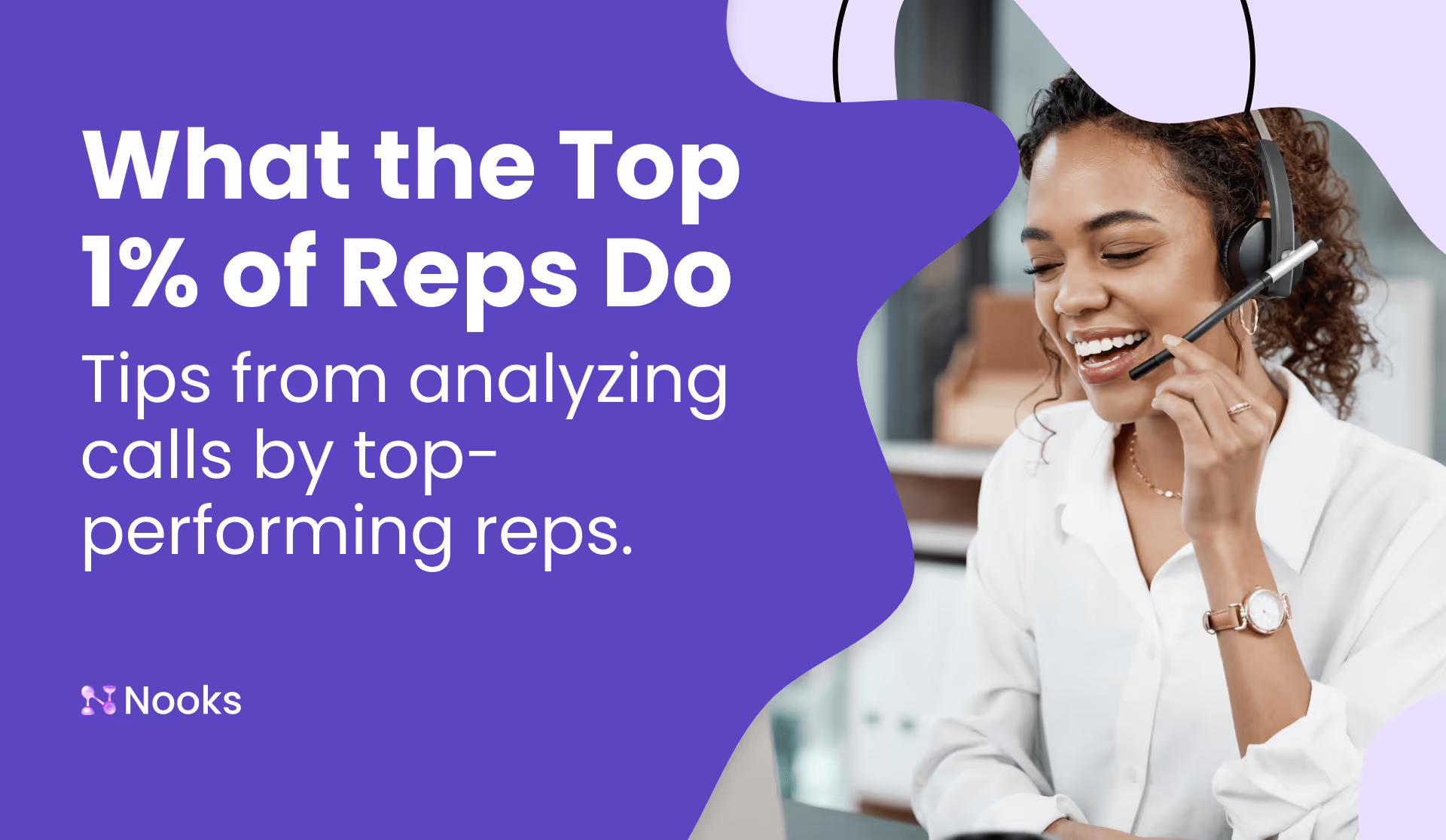
There’s this one account you’ve been chasing for weeks. Your research says they’d be a great fit as a customer. And you know that a key executive just clicked on one of your emails. So, you start dialing. The executive answers their phone.
“Hello?”
You’re on.
What do you do next?
We’ve got some ideas.
What Do the Top Performers Do?
Nooks gives prospecting superpowers to the world’s best outbound teams. So, we know a thing or two about what makes a great call. After all, we constantly analyze millions of prospecting calls. The wins, the losses, and everything in between.
And we’ve spotted some best practices that we want to share.
Here’s how we did it. We took all of the calls made on the Nooks platform in the past 30 days. We then identified the top reps in that period based on total meetings booked and their 'conversation to meeting' score. That is, how successful they are at turning that “Hello?” into a booked meeting.
Then, we sampled calls across these reps to answer questions like: What makes these reps successful? What did they do on their calls that worked? Let’s take a look.
53% of Reps Say No to Permission-Based Openers
There’s been lots of discussion on LinkedIn about permission-based openers. The logic behind this kind of opening is sound. You want your prospect to let down their guard enough to engage. If they feel boxed in, they’re less likely to hear you out.
The permission-based opener gives your prospect the option. You specifically ask for the OK to pitch them. As Leslie Venetz outlines, you don’t need to overdo it with anything too cringey. Use your value prop to strengthen your ask:
“James, I know you weren’t expecting this call. If I can help you solve your quarterly reporting errors, would that be worth 30 seconds of your time?”
By framing it as asking for permission, you give your prospect the power to say ‘no’. And that power may make them more likely to hear your story.
So, what did the Top 1% of sellers do?
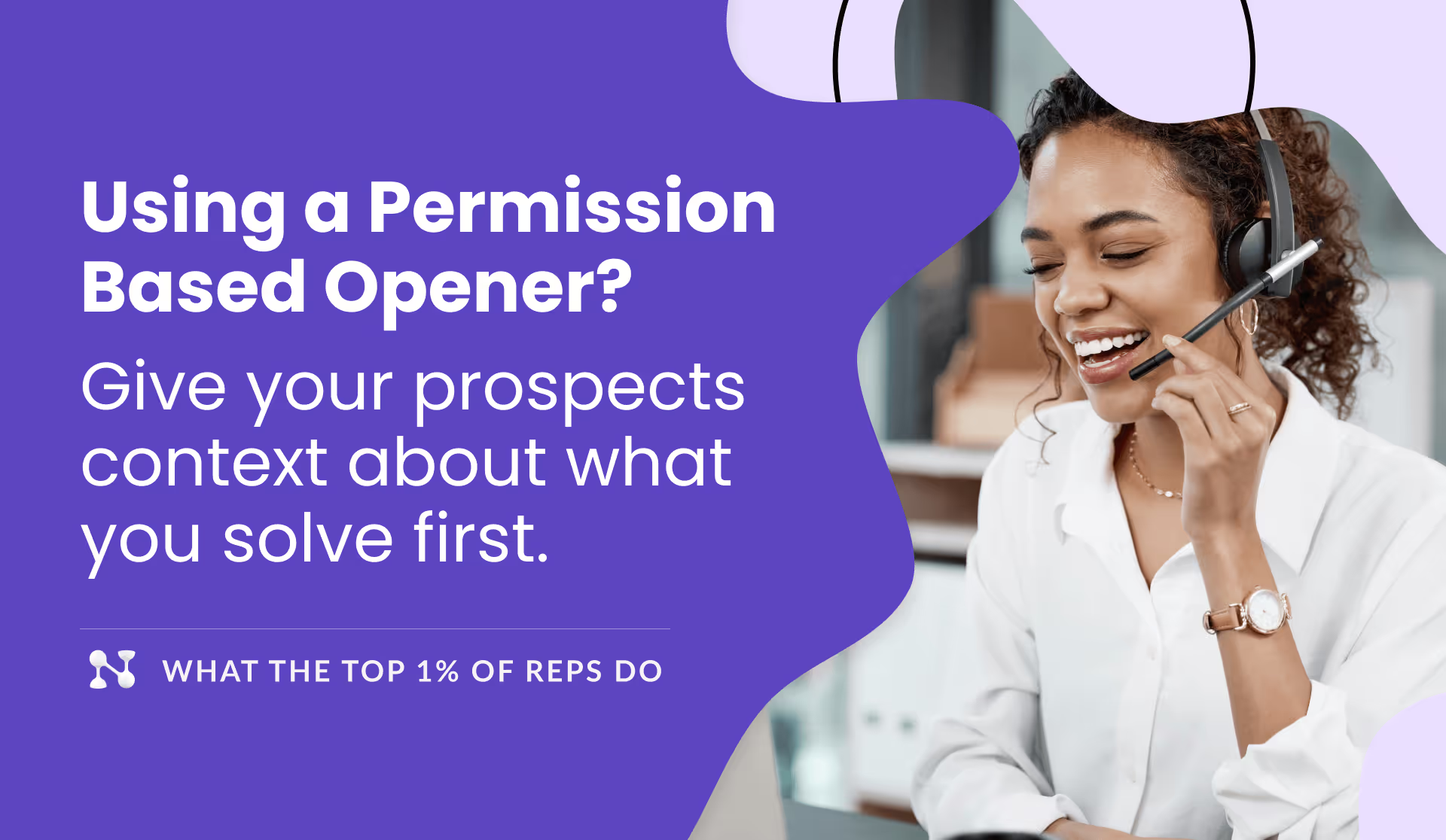
The results were split. 53% of the top sellers didn’t use a Permission Based Opener. Instead, they shifted from the initial greeting right into a statement about related customers or expertise. They established credibility quickly, so prospects were on board to keep the conversation going.
41% of the top sellers asked for permission with context. That is, they gave a few words about the company or market. That way the prospect knows what kind of pitch they’ll hear.
One of the top sellers combined the two elements very effectively. He established credibility upfront by highlighting his well-known founder. And then asked for permission to continue. By hinting at the value from the founder, prospects were only too happy to say yes to his permission request.
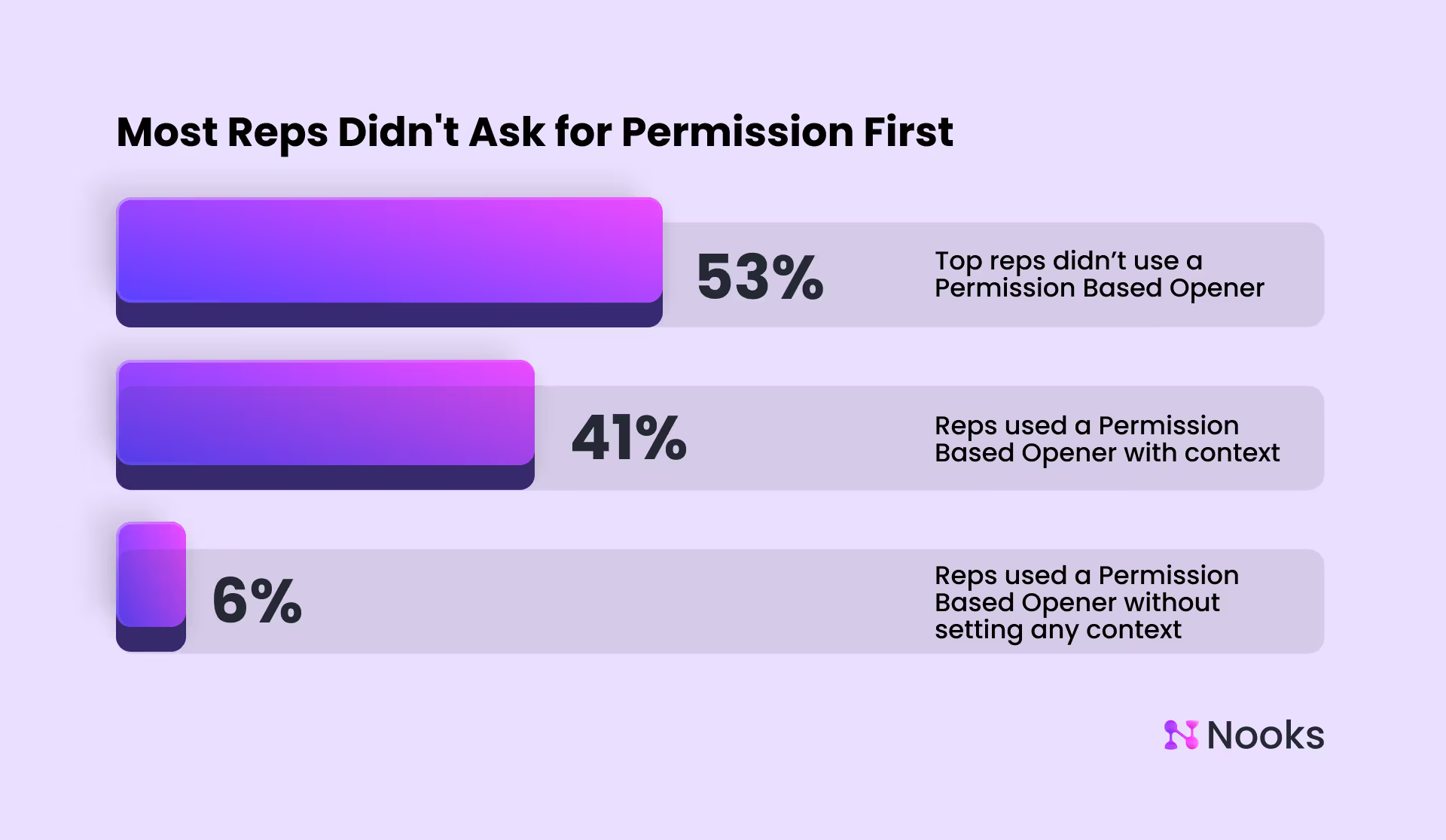
Here are some examples of different approaches to openers.
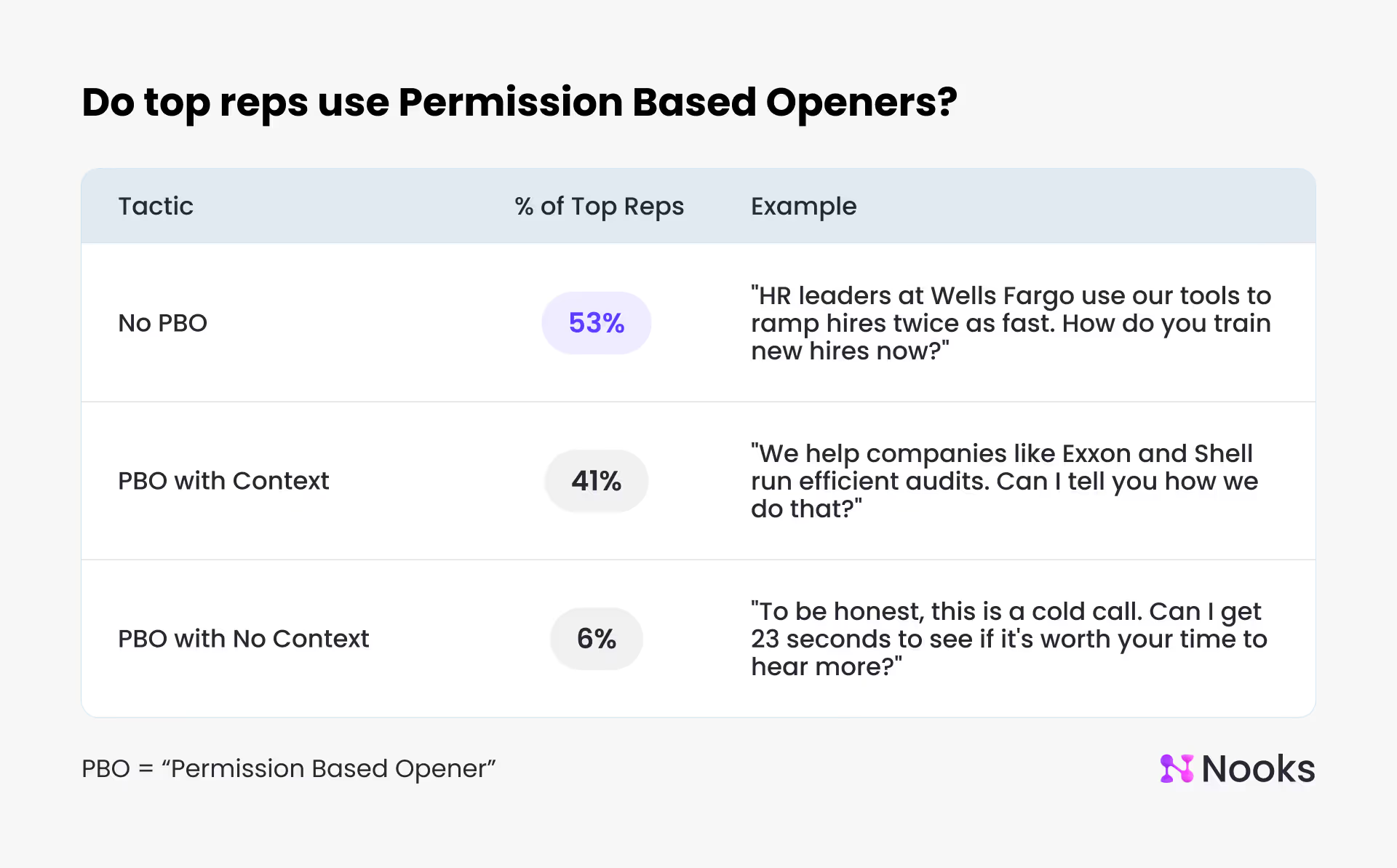
There were also some exceptions: about 6% of reps used a Permission Based Opener with no context other than mentioning that this is a cold call. For instance, one of the top reps asked for “23 seconds of your time” without mentioning their company name. The pattern interrupt of the odd amount of time was probably why it consistently worked.
Nooks’ call recording and analytics help team leads and managers spot these kinds of best practices with ease. The result: everyone on the team is more productive.
35% of Top Reps Use Past Interactions for Quick Personalization
In less than 60 seconds, you have to convince your prospect that a meeting will be valuable. It means investing their time. If they don’t think it’s going to be relevant to the urgent problems they’re facing, they aren’t going to accept.
That’s why personalization matters. Not just ‘where you went to college’ personalization. But personalizing the pitch to make the pain relevant to the prospect.
Demand generation expert Jen Allen-Knuth points out, “One thing that has stood out as a differentiator is when sellers take the time to care about the person’s business.”
Focus your conversation on business problems that matter to your prospect. When they understand that you solve challenges they’ve been worrying about, they’re more likely to listen.
A good approach is to hint at insights and expertise that you and your team will share in the meeting. You can do that by referencing customers in their industry or thought-leaders in your space.
What did the Top 1% do to personalize their calls?
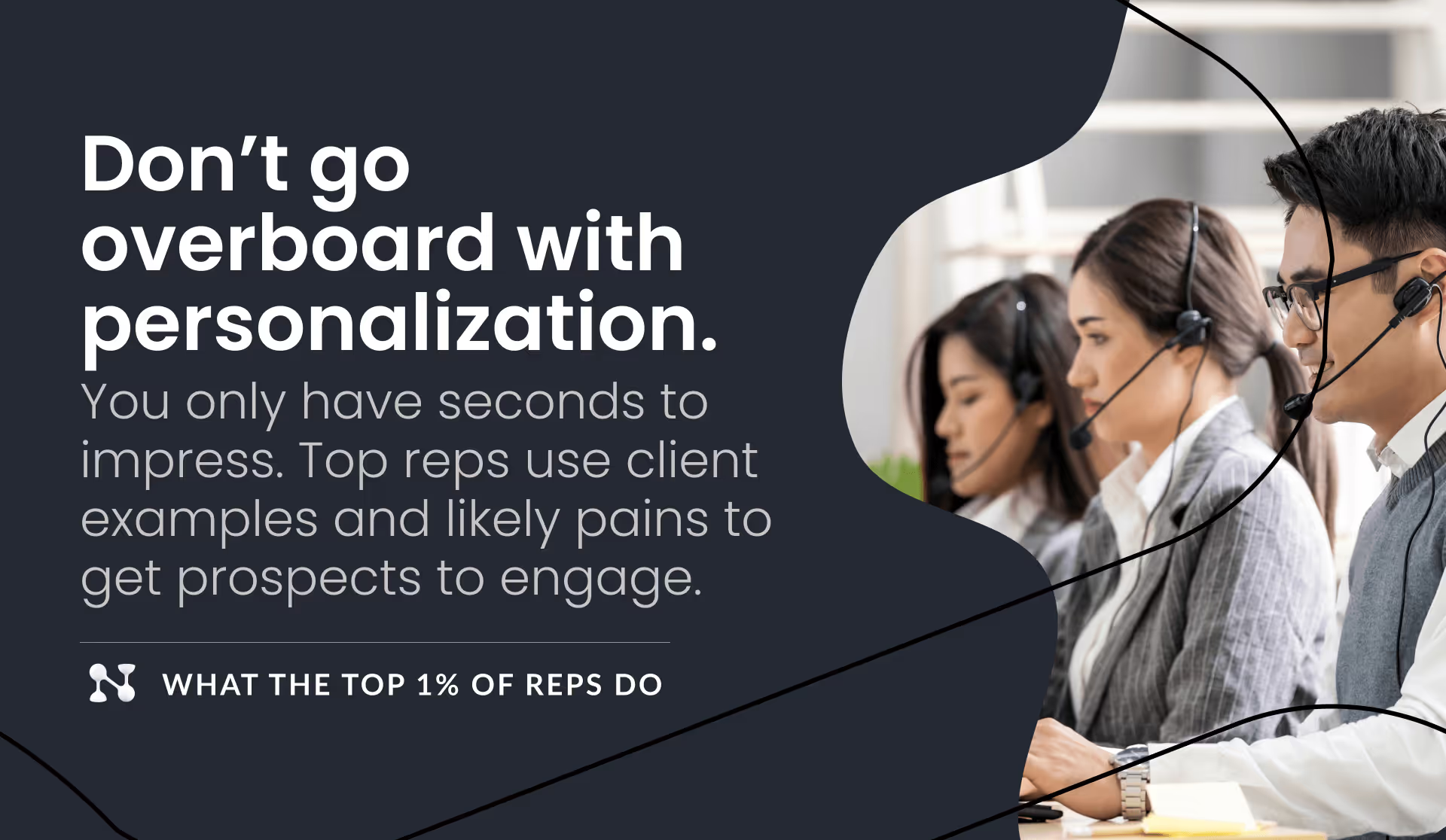
The top sales reps got right to the point. They know they only have seconds to make their pitch relevant.
71% of top reps highlight prospect-based over company-based personalization. They use tactics like mentioning role-specific pains, job changes, previous conversations, and interactions with colleagues.
Of the top reps, 18% personalized by referencing recent promotions or job changes as a reason to act now. One rep mentioned upcoming conferences that might be good opportunities to meet at.
35% personalized the conversation by focusing on past interactions or conversations with colleagues. That could be content that was shared shortly before the call or referencing previous calls that didn't result in a booked meeting. This likely works because the prospect feels that there is a relationship that's been established, and they're more likely to stay on the call.
Nooks’ virtual sales floor helps you share and reinforce these kinds of best practices across your teams.
83% of Top Reps Ran a Value-Based Pitch
You’ve got their interest. You’re making the conversation relevant to them. But how do you let the prospect know that your business can solve their thorniest challenges?
Sales guru Anthony Iannarino suggests storytelling as an approach. Instead of pitching features, help your prospect see where they could be if they work with you.
So, if you’re selling a risk management software, don’t just list out what it does. Instead, talk about how your customers felt when those painful risk audits vanished.
Looking at the Top 1% of reps. How did they frame their pitches?
.avif)
There was a strong consistency across all of the top sales reps we assessed. 83% of reps pitched the value of their solution instead of feature-dumping. They told very short stories. Stories that focused on the outcome of where customers got to by using the pitched solution. Here are some examples:
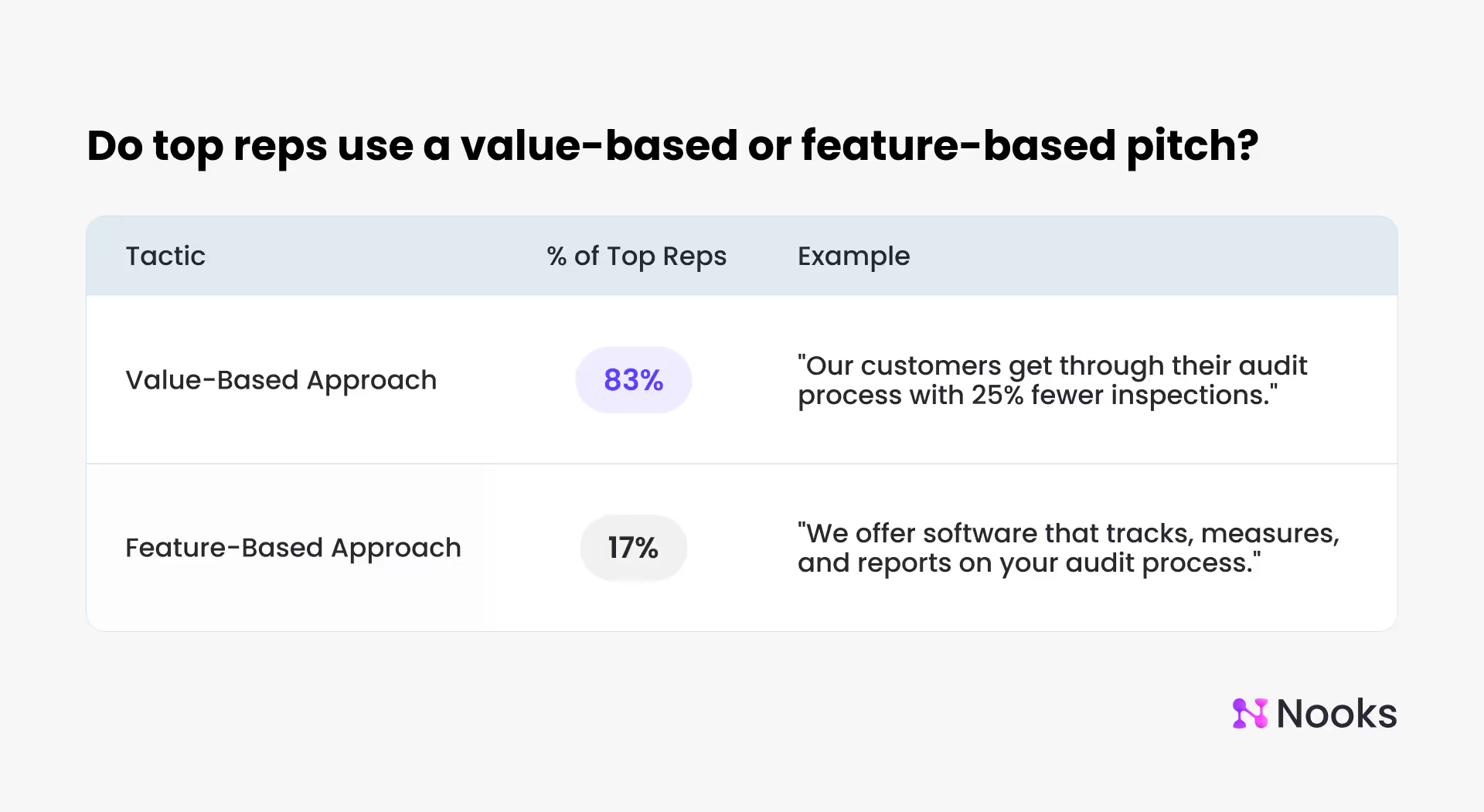
So, you might give a VP of Finance the positive future state of “audits that are done in days, not weeks”.
Another approach that one top rep did was to use a compelling metaphor. They were pitching a monitoring service that gives a complete view of a customer’s infrastructure. They pitched the prospect’s current monitoring approach as like watching a movie “through a straw”.
That’s a pretty vivid way to think about it – and it led directly to a string of meetings.
16% of Reps Offered Access to an Expert or Proprietary Data to Land a Meeting
The prospect is engaged and interested. They see that you can potentially add value. But you still need to stick the landing by getting a meeting on the calendar. You can’t let them hang up before they schedule a time. Otherwise your scheduling email will get ignored.
How should you offer up the meeting? The team over at Gong ran some numbers and saw better results when you set up the value of the meeting, rather than it just being about getting time on the calendar.
So, instead of “can we find some time to discuss this more?” try “can we get some time to show you how MegaBank cut their operating expenses?”. You’re selling the value of the meeting.
That makes sense. You’re asking someone to make a bet on you that this meeting will be worth their time. No shows and cancellations are more likely if they’re just taking the meeting for charity’s sake.
Did the Top 1% of reps follow the same pattern?
11% of reps offered to bring in an industry guru, like the CEO or another domain expert, for the introductory call. Someone that can provide value to the prospect. A smaller number, about 5%, offered to bring proprietary data or similar exclusive information to the call that could help give the prospect deeper insight.
One asked brief qualifying questions to make sure that the demo was “tuned” to the prospect’s business. That definitely will make the follow-up meeting more valuable to the prospect.
Coming in for the Close
When you can quickly engage your prospects you have a better chance of making your pitch. And when your pitch is tuned to their needs and situation, your prospect is more likely to invest their time in taking a meeting.
Now that we’ve looked at some of the best practices of the Top 1% of SDRs and outbound sales reps, we can see the magic behind their results. As always, though, best practices should be tailored to the needs of your business. After all, your audience, customers, and offer are unique. Your prospecting calls will be unique too.
Prospecting Superpowers that Boost Best Practices
Nooks helps top teams to reinforce prospecting best practices across your team. With Nooks, you can:
- Identify best practices across your team with call analytics, recordings, and transcripts. Spot what works quickly, and get those winning tactics to your team.
- Share and support best practices with your teams with a collaborative and energizing virtual sales floor. And guide rep development with AI training tools that can fortify your own best practices.
- Run great calls with AI battle cards that give sellers insights into prospects and accounts that help personalize any conversation.
That means you can identify, share, and reinforce the behaviors of your Top 1% reps across your entire team.
Want to see Nooks in action? Let’s get started!



.avif)



